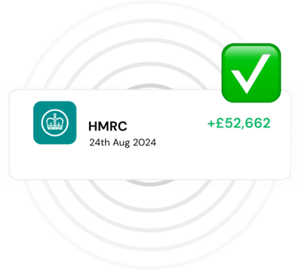R&D Tax Credits For The Engineering Sector
Get the sector experience you need to make a successful R&D tax relief claim
QLC helps engineering companies accelerate their R&D claims with our streamlined portal and expert team.


Our engineering experience
With many years of experience helping engineering companies take advantage of R&D tax incentives, QLC understands the unique challenges and opportunities in your industry. We've helped many engineering businesses claim millions in R&D tax credits. Let QLC help you.
Find out more in our engineering sector success stories below:
CASE study 1
Engineering Stability at Sea
Developing Vibration-Resistant Bracketry for Cruise Ship Speakers
Our client faced a challenge familiar to many in the industry: how to improve existing machinery to boost performance without the high cost of purchasing new equipment. To tackle this, they invested in several R&D projects aimed at enhancing the capabilities of their current machinery. We worked closely with them, adopting a general approach that covered a series of sub-projects. Each sub-project not only focused on specific improvements but also laid the groundwork for innovations that could be applied to future machinery.
Improving plastic injection moulding machines
A key focus was enhancing the efficiency of their plastic injection moulding machines. The goal was simple: increase the flow of pellets through the system to streamline production. The client designed and prototyped a 'collar follower' to integrate into the existing machinery, but the initial versions caused pellet contamination. This setback led to further iterations and material testing. After several adjustments, the final solution significantly improved performance, demonstrating the value of persistence in the R&D process.
Improving plastic injection moulding machines
One key area of focus was their plastic injection moulding machines. The goal was to increase the flow of pellets through the machinery, thereby enhancing overall efficiency. To achieve this, the client designed and prototyped a ‘collar follower’ within the existing machinery. However, the initial prototypes caused pellet contamination, prompting further development and testing with different materials. This iterative process led to a successful solution that significantly improved the machine's performance.
Reducing manual intervention in paper rolling machines
The next project aimed to minimise the maintenance required for paper rolling machines. The primary issue was paper sticking to the rollers during production, which necessitated frequent manual intervention. To address this, the client experimented with various materials and roller designs, developing and testing multiple prototypes. Ultimately, they succeeded in reducing maintenance needs, streamlining the production process, and increasing overall efficiency.
Lowering costs for paper printing machinery
Finally, the client set out to reduce the manufacturing costs of their paper printing machinery without compromising its functionality. After investigating the existing machinery, they developed a lighter, more efficient design for the primary structure. Rigorous testing followed to ensure the new design met all health and safety requirements. This process not only reduced production costs but also maintained the machinery's high performance standards.
The results: success
Each of these sub-projects resulted in tangible improvements to the client’s existing machinery, setting a new baseline for industry standards. Because such enhancements often lack readily available information, the client's work in these areas qualified as R&D.
With QLC's help, they successfully claimed R&D tax credits for these projects, securing vital funds to reinvest in further innovation. This case exemplifies how investing in R&D for machinery improvements can be a cost-effective alternative to purchasing new equipment, all while enhancing efficiency and driving growth.

Success stories
What Our Clients Say About Us
"I am really impressed with the efficiency of your work, and the results you got for our company. A very friendly, committed and obviously hardworking team. You made the whole process very easy."
Will Tompkins (Director)
Vintage and Classic Cars
"QLC successfully claimed credits for the past 2 financial years, this year was even better. They managed the application and claimed the R&D credit prior to our annual tax bill, making the whole process quicker, easier and more efficient than last year."
Andrew Forbes (Director)
Architecture
"A massive thanks to all your team, obviously with the current situation, this money couldn’t have come at a better time."
Ian Cooke (Director)
Engineering
"From our experience we have always found QLC to be efficient and thorough in their tax appraisals, carefully guiding us through the often complex process. They have a very approachable team, all of which have been able to offer excellent advice when needed."
Ben Reed (Director)
Architecture
"They are proactive and efficient in performing their service and I have been impressed by their dynamism."
Chris Wright (Director)
Motorsport Engineering
"Your company did exactly what you said it would do. It took far less time than the other company that we had used in the past. We are extremely pleased with the outcome."
Adrian Smith (Company Sec)
Manufacturing Firm
"I am really impressed with the efficiency of your work, and the results you got for our company. A very friendly, committed and obviously hardworking team. You made the whole process very easy."
Will Tompkins (Director)
Vintage and Classic Cars
"QLC successfully claimed credits for the past 2 financial years, this year was even better. They managed the application and claimed the R&D credit prior to our annual tax bill, making the whole process quicker, easier and more efficient than last year."
Andrew Forbes (Director)
Architecture
"A massive thanks to all your team, obviously with the current situation, this money couldn’t have come at a better time."
Ian Cooke (Director)
Engineering
"From our experience we have always found QLC to be efficient and thorough in their tax appraisals, carefully guiding us through the often complex process. They have a very approachable team, all of which have been able to offer excellent advice when needed."
Ben Reed (Director)
Architecture
"They are proactive and efficient in performing their service and I have been impressed by their dynamism."
Chris Wright (Director)
Motorsport Engineering
"Your company did exactly what you said it would do. It took far less time than the other company that we had used in the past. We are extremely pleased with the outcome."
Adrian Smith (Company Sec)
Manufacturing Firm
How much could you claim?
The average R&D tax claim in the engineering sector
For your own quick estimate, you can use our easy-to-use R&D tax calculator:
£ 53 k
Common R&D activities in the engineering sector

Product development and prototyping
Designing and testing new machinery, tools, or components.
Developing prototypes to assess feasibility and performance.
Creating bespoke solutions for complex engineering challenges.
Iterating product designs to improve functionality, efficiency, or safety.
Process improvement and automation

Enhancing manufacturing processes to reduce costs or improve yield.
Implementing automated systems, including robotics and AI-driven technologies.
Introducing sustainable practices, such as energy-efficient methods or waste reduction.
Developing advanced testing methods to ensure quality control.

Materials research and development
Irrigation system improvements
Experimenting with new materials to achieve better performance or durability.Improving material properties, such as strength, conductivity, or resistance.
Developing composites or alternative materials for specific applications.
Infrastructure and systems engineering

Designing and implementing large-scale engineering systems.
Resolving challenges in structural engineering or construction processes.
Developing innovative approaches to renewable energy systems.

Testing and validation
Conducting rigorous testing to meet regulatory standards or performance goals.
Performing stress, fatigue, or environmental testing on products and systems.
Developing in-house tools or software for advanced testing and monitoring.
Regulatory and compliance activities

Developing processes to meet industry standards such as ISO, ASME, or CE.
Designing new methods to comply with environmental regulations.
Validating new technologies or approaches to achieve certifications.
Advanced Technologies in Engineering R&D
Artificial intelligence and machine learning
Optimising designs, predicting system behaviour, and automating repetitive tasks.Digital twin technology
Creating virtual models of systems to simulate and improve performance.Additive manufacturing (3D Printing)
Developing new materials and techniques for additive processes.IoT integration
Enhancing connectivity and data collection for smarter systems.Sustainable engineering solutions
Innovating to reduce energy consumption and environmental impact.
Why choose QLC?
QLC and our portal help businesses like yours claim R&D tax credits and tax relief faster and more successfully than ever.

End-to-end service

Easy-to-use customer portal

Faster payouts than our competitors

See your money in 16 days

Flexible comms

All sectors and sizes

No minimum fee

Stakeholder transparency
Engineering Sector R&D Tax Credit FAQ
What qualifies as R&D in the engineering sector?
Qualifying activities include developing new products, processes, or services that aim to resolve scientific or technological uncertainties. See above for examples specific to the engineering sector. See above for an exhaustive list.
Can failed projects still qualify for R&D tax credits?
Yes. Even unsuccessful projects qualify, as long as they address technical uncertainties or aim to advance engineering knowledge.
What costs can be included in an R&D tax relief claim?
Eligible costs include staff salaries, software, materials, subcontractor costs, and utilities directly related to R&D.
How does R&D tax credit work for collaborations in engineering?
Collaborative projects with universities, research institutions, or other firms may still qualify, depending on the funding and financial risk arrangement.
How are R&D tax credits calculated for global engineering firms?
Only UK-based activities are eligible for R&D tax relief engineering claims. However, some costs, such as overseas subcontractors, may qualify under specific circumstances.
How far back can engineering firms claim R&D tax credits?
R&D tax credits for engineering firms can be claimed up to two financial years after the end of the accounting period in which the costs were incurred.
What is the process for claiming R&D tax credits in engineering?
QLC simplifies the process. We’ll assess your projects, calculate costs, and prepare your claim, ensuring compliance with HMRC requirements. Start your claim today with a free trial of our portal.
